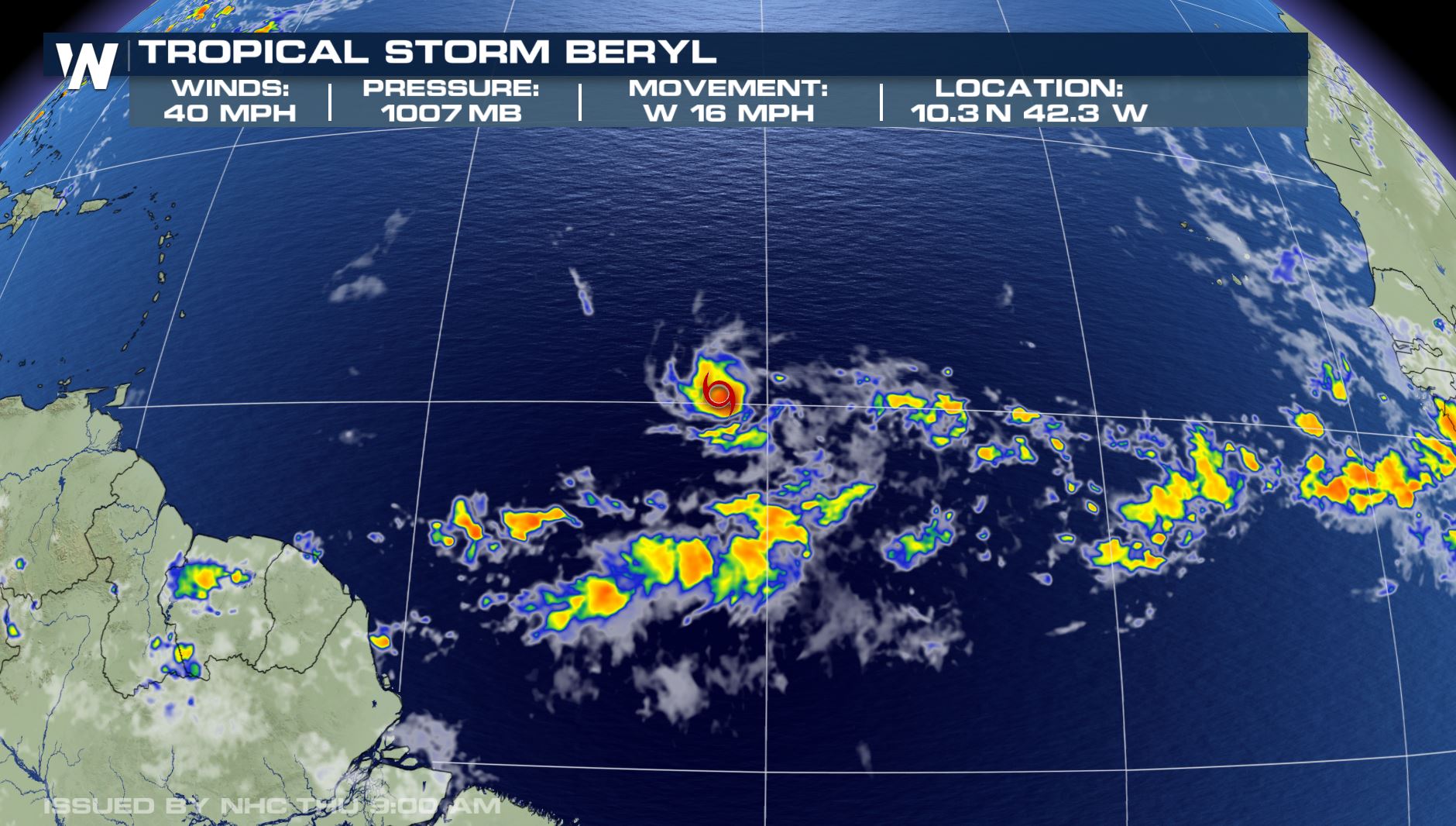Hurricane Beryl’s Predicted Path and Intensity

Hurricane beryl prediction – Hurricane Beryl is anticipated to follow a westward trajectory, with an expected landfall in the vicinity of the Florida Panhandle. The hurricane is predicted to intensify as it approaches land, reaching Category 3 status with sustained wind speeds of up to 120 miles per hour. Additionally, storm surge of up to 10 feet is anticipated along the Gulf Coast, accompanied by heavy rainfall that could lead to flash flooding.
Hurricane Beryl, a powerful storm that recently made landfall, has been the subject of intense weather predictions. Meteorologists have been closely monitoring its path, which can be tracked in detail on this website: path of hurricane beryl. As the storm continues to move, forecasters are refining their predictions to provide the most up-to-date information on its potential impact.
Predicted Path, Hurricane beryl prediction
Hurricane Beryl is currently located in the Atlantic Ocean, approximately 500 miles east of the Florida coast. The storm is expected to move westward over the next few days, gradually intensifying as it approaches land. The projected path indicates a landfall near Panama City, Florida, by late Wednesday evening.
Anticipated Intensity
As Hurricane Beryl approaches the Gulf Coast, it is forecast to intensify into a Category 3 hurricane. Wind speeds are anticipated to reach up to 120 miles per hour, with gusts even higher. The storm is also expected to produce heavy rainfall, with some areas receiving up to 12 inches of rain. Additionally, a storm surge of up to 10 feet is possible along the Gulf Coast, posing a significant threat to coastal communities.
Hurricane Beryl be expected to bring heavy rainfall and strong winds to the windward islands. The storm is expected to make landfall on Sunday, and residents are urged to prepare for the impact. Hurricane Beryl is the first major hurricane of the 2023 Atlantic hurricane season.
Areas Likely to be Affected
The areas most likely to be affected by Hurricane Beryl include the Florida Panhandle, Alabama, and Mississippi. The storm’s path could also impact parts of Louisiana and Georgia. Residents in these areas should closely monitor the storm’s progress and prepare for potential impacts.
Potential Impacts and Mitigation Strategies

Hurricane Beryl is expected to bring significant impacts to coastal communities, including flooding, storm damage, and power outages. It is crucial to understand these potential impacts and implement appropriate mitigation strategies to minimize the hurricane’s consequences.
Flooding is a major concern during hurricanes. Heavy rainfall and storm surge can cause rivers and streams to overflow, leading to widespread flooding. Coastal communities are particularly vulnerable to flooding, as storm surge can push water inland, inundating homes and businesses.
Evacuation Plans
- Develop comprehensive evacuation plans that identify safe evacuation routes and shelters.
- Ensure that all family members are familiar with the evacuation plan and know where to go in case of an emergency.
- Practice evacuation drills to ensure that everyone knows what to do and where to go.
Property Protection Measures
- Secure loose objects around your property, such as patio furniture, grills, and trash cans.
- Board up windows and doors to protect them from wind damage.
- Elevate valuables and important documents to higher floors to protect them from flooding.
Emergency Preparedness
- Stock up on non-perishable food, water, and other essential supplies.
- Have a battery-powered radio and flashlights on hand for communication and lighting.
- Make a plan for how you will communicate with family and friends in case of an emergency.
By implementing these mitigation strategies, coastal communities can minimize the impact of Hurricane Beryl and protect lives and property.
Historical Context and Comparative Analysis: Hurricane Beryl Prediction

Understanding the historical context of hurricanes that have impacted similar areas can provide valuable insights into the potential impacts of Hurricane Beryl. By comparing its predicted characteristics to those of past hurricanes, we can identify similarities and differences that may inform our predictions.
Previous Hurricanes Impacting Similar Areas
- Hurricane Ivan (2004): Category 5 hurricane that made landfall in Alabama, causing widespread damage and flooding.
- Hurricane Katrina (2005): Category 3 hurricane that devastated New Orleans and the Gulf Coast, leading to catastrophic flooding and loss of life.
- Hurricane Rita (2005): Category 5 hurricane that made landfall in Texas, causing significant damage to coastal areas.
These hurricanes share similarities with Hurricane Beryl, including their intensity, potential landfall location, and the size of the areas they may impact.
Comparative Analysis
- Intensity: Hurricane Beryl is predicted to reach Category 3 intensity, similar to Hurricane Katrina.
- Path: The predicted path of Hurricane Beryl suggests a landfall near the Florida Panhandle, similar to Hurricane Ivan.
- Size: The expected size of Hurricane Beryl is comparable to that of Hurricane Rita, indicating the potential for widespread impacts.
While Hurricane Beryl shares similarities with past hurricanes, there are also differences to consider. For example, the exact timing and location of landfall can vary, and the intensity of the storm can change over time. These factors will influence the specific impacts of Hurricane Beryl and should be monitored closely.
Implications for Prediction
The historical context and comparative analysis of Hurricane Beryl provide valuable information for predicting its potential impact. By understanding the similarities and differences between Beryl and past hurricanes, we can better anticipate the challenges and prepare for the necessary mitigation strategies.